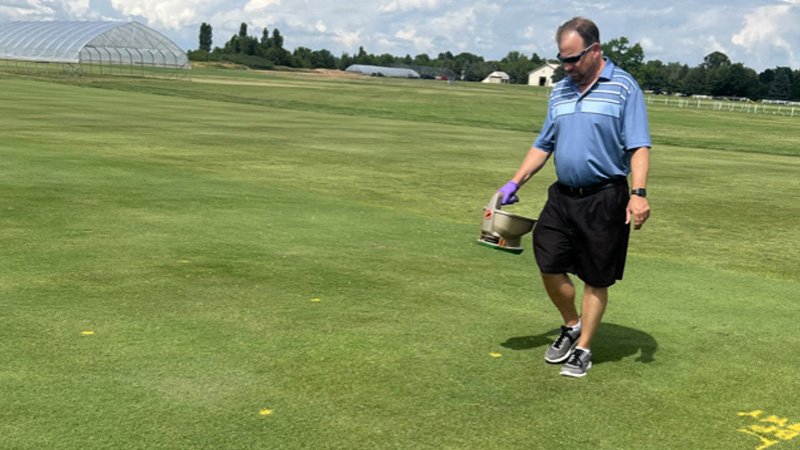With temperatures topping the 90-degree mark on at least 10 occasions in June, summer arrived in central Indiana with vengeance this year. Two months later, as summer winds down and the end of the 100 days of hell comes into view, disease pressure on cool-season grasses also is on the wane.
The turfgrass team at Purdue has a digital turf tip and resource tool to help identify and manage common diseases in cool-season turfgrass
According to the National Weather Service, the average daytime high in central Indiana in August was 83 degrees, 3 degrees cooler than in June. Those falling temperatures (both daytime and overnight), fewer consecutive days of unseasonably hot weather and days that grow shorter with each flip of the page of the calendar mean less heat stress and disease pressure on cool-season grass, writes Purdue University professor Lee Miller, Ph.D., in promoting this new online tool for managing common diseases in cool-season turfgrass. Seasonal shifts in weather also mean that much of the turf that has been affected by heat stress and disease should, by now, be well on its way to recovery, if not fully healed, wrote Miller.

For example, brown patch was a common issue in the Midwest throughout June and July as the mercury in the thermometer rose. But that disease is almost a non-factor now heading into what is a much cooler September.
A new resource from Purdue provides tips for managing brown patch and nine other common diseases found in cool-season turfgrass. The 14-page guide, one of many online tools available for turfgrass managers from Purdue, provides information on leaf blight, brown patch, gray leaf spot, pink snow mold, Pythium blight, red thread, rust, dollar spot and summer patch in cool-season grasses, including Kentucky bluegrass, tall fescue, fine fescue and perennial ryegrass.
The document includes the time of year when each turf species is susceptible to each disease, symptoms, treatment and what recovery looks like.
The new guide is just one of many online tools available, including those on turf establishment, weed control, disease reports and control, insect control, as well as tools and calculators to determine fertilization needs, predict disease outbreaks, turf identification, sand and seed calculator and turfgrass selection. Purdue also released earlier this year its updated weed identification and control guide.

